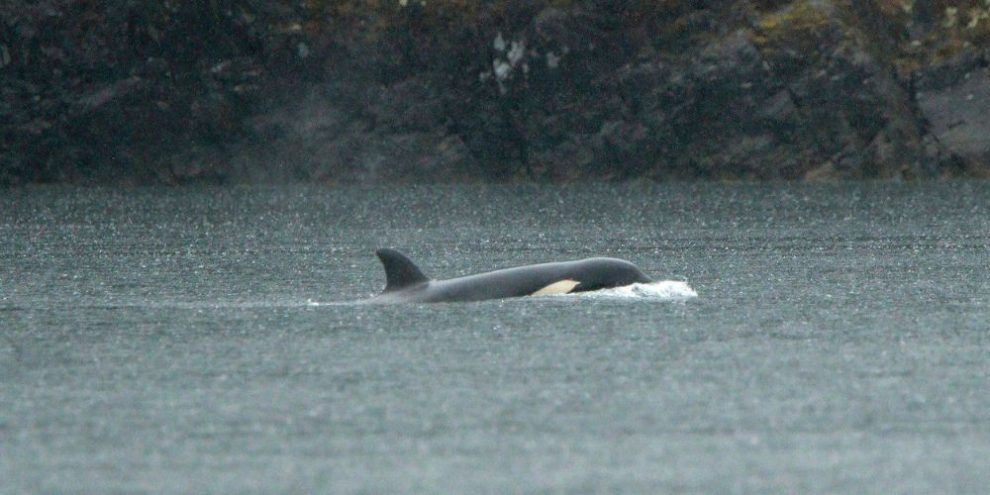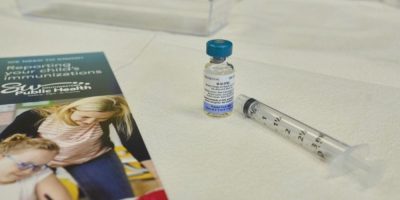
The timer has been set to save a young killer whale's life, say First Nations leaders and a federal Fisheries Department marine mammal expert.
Plans to get the stranded two-year-old orca out of a remote lagoon off northern Vancouver Island are aiming for a timeline of two weeks or less, they say.
Paul Cottrell, a marine mammal co-ordinator with the Fisheries Department, said there is still much to organize before the rescue team tries to capture the calf and transport it out of the lagoon to the nearby open ocean.
The plan also involves placing the orca calf in a large net pen in the ocean where its health can be examined and the chances of it meeting its family pod are greatest, he said.
"We're moving to this next phase of capture and transport and reunification with its pod," Cottrell said. "We're doing a great amount of work to make that happen. Time is of the essence for this calf we know that and the planning is well along, but we do have a little bit more planning, equipment and logistics to work out."
The calf has been stranded near Little Espinosa Inlet since March 23, when its pregnant mother became trapped on a rocky beach at low tide and died.
The orca calf drama is unfolding near the tiny village of Zeballos, population 200, located about 450 kilometres northwest of Victoria.
Barrie's News Delivered To Your Inbox
By submitting this form, you are consenting to receive marketing emails from: Central Ontario Broadcasting, 431 Huronia Rd, Barrie, Ontario, CA, https://www.cobroadcasting.com. You can revoke your consent to receive emails at any time by using the SafeUnsubscribe® link, found at the bottom of every email. Emails are serviced by Constant Contact
Fisheries Department officials, the area’s Ehattesaht First Nation and marine mammal rescue experts are meeting daily about the calf, but are now convinced the only way to save it is to capture and transport it from the three-kilometre-long tidal lagoon to the ocean.
"I think essentially it may be in the next couple of weeks," Ehattesaht First Nation Chief Simon John said Wednesday of the rescue plan. "A week and a half is somewhere where we might be."
John said other attempts to entice the young whale to leave the lagoon have not been successful and the nation wants to take every opportunity available to save its life.
"The whole plan, through the whole process, has been to reunite it with its pod," he said. "It needs assistance. It's so young."
Officials set out pieces of a harbour seal this week near where the calf swims in the deepest part of the lagoon with the hope it might eat, but while the seal meat was gone, they aren't sure if the calf ate it.
The orca has been seen with a bird in its mouth. There were indications the calf was still supplementing its diet with mother's milk.
Rescue team members were out in boats again Thursday on the lagoon, hoping to feed the young orca harbour seal remains.
Bigg's killer whales, like this calf, are mammal eaters, unlike resident orcas off B.C.'s coast which eat fish.
The calf appears in good health, spending much of its time in a mid-section of the three-kilometre-long lagoon, surfacing between five and 10 minutes, said Fisheries Department officials who have been monitoring the young orca with drones and boats.
The First Nation said a wide range of equipment and technology has been made available for the rescue effort, including helicopters, drones, trucks, excavators, boats and advanced equipment to provide remote sensing and land surveying.
The last time members of the calf's pod were spotted was Sunday near Ucluelet, which is also on Vancouver Island's west coast, but about 150 kilometres south of Zeballos.
Cedar boughs placed by the First Nations residents, who have named the orca calf kwiisahi?is, or Little Brave Hunter, hang from a bridge that the young orca must swim under, while a bouquet of flowers rests at the roadside where locals and visitors are keeping vigil.
This report by The Canadian Press was first published April 4, 2024





